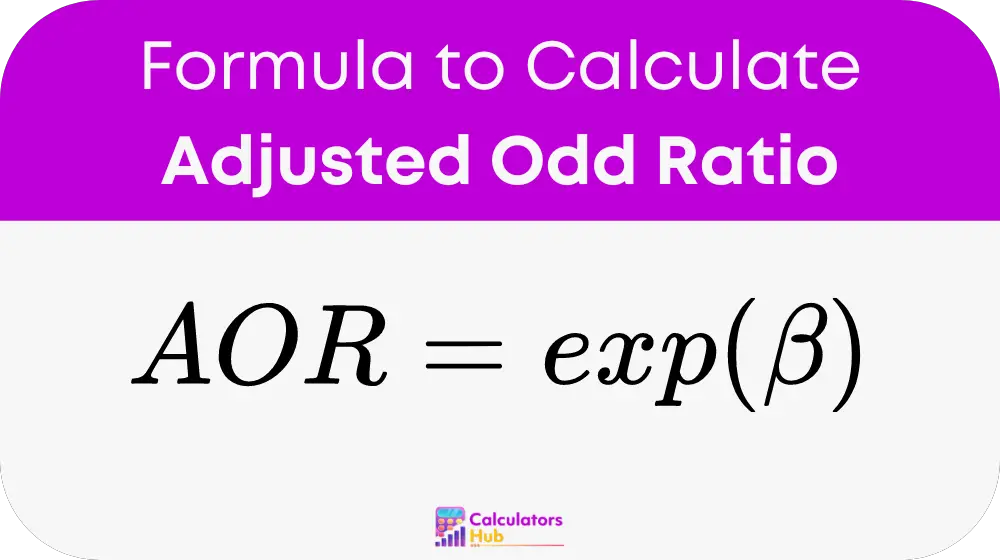The Adjusted Odds Ratio (AOR) Calculator is a specialized statistical tool used primarily in the fields of medical research and epidemiology to measure the strength of the association between an exposure and an outcome, adjusting for the potential confounding effects of other variables. This tool plays a crucial role in providing a clearer understanding of the data, allowing researchers and clinicians to make more informed decisions based on complex multivariable analyses.
Formula of Adjusted Odd Ratio Calculator
The formula for calculating the Adjusted Odds Ratio (AOR) is:

Where:
- exp represents the exponential function, a mathematical constant approximating 2.71828.
- β (beta) represents the regression coefficient for the variable of interest from a logistic regression model.
Detailed Steps for Calculation
- Conduct Logistic Regression: Perform logistic regression analysis to obtain the regression coefficients (β) for each independent variable, including the variable of interest.
- Identify the Coefficient: Identify the regression coefficient (β) corresponding to the variable of interest.
- Calculate the Exponential: Apply the exponential function to the identified coefficient to derive the Adjusted Odds Ratio.
Table for General Terms and Quick Calculations
To assist users in understanding the concept without complex computations, here’s a simplified table showing hypothetical values:
| Variable | Regression Coefficient (β) | Adjusted Odds Ratio (AOR) |
|---|---|---|
| Variable A | 0.5 | 1.65 |
| Variable B | -1.2 | 0.30 |
| Variable C | 0.0 | 1.00 |
This table provides a quick reference for how changes in the regression coefficients influence the Adjusted Odds Ratio, demonstrating the direct application of the formula.
Example of Adjusted Odd Ratio Calculator
Suppose a study investigates the effect of a new drug on reducing the incidence of a certain disease. The logistic regression analysis might yield a regression coefficient (β) of 0.2 for the drug usage variable. Using our formula:
AOR = exp(0.2) ≈ 1.22
This means that the usage of the drug is associated with a 22% increase in the odds of the positive outcome, adjusting for other variables in the model.
Most Common FAQs
A1: The Adjusted Odds Ratio allows researchers to estimate the relationship between an exposure and an outcome, adjusting for other variables, thus providing a more accurate and nuanced understanding of the data.
A2: Unlike the simple Odds Ratio, which considers only a single variable, the Adjusted Odds Ratio takes into account the effects of multiple confounding variables, offering a clearer insight into the true effects of the variable of interest.
A3: Yes, an Adjusted Odds Ratio less than 1 indicates that the exposure is associated with lower odds of the outcome occurring, suggesting a protective effect or negative association.